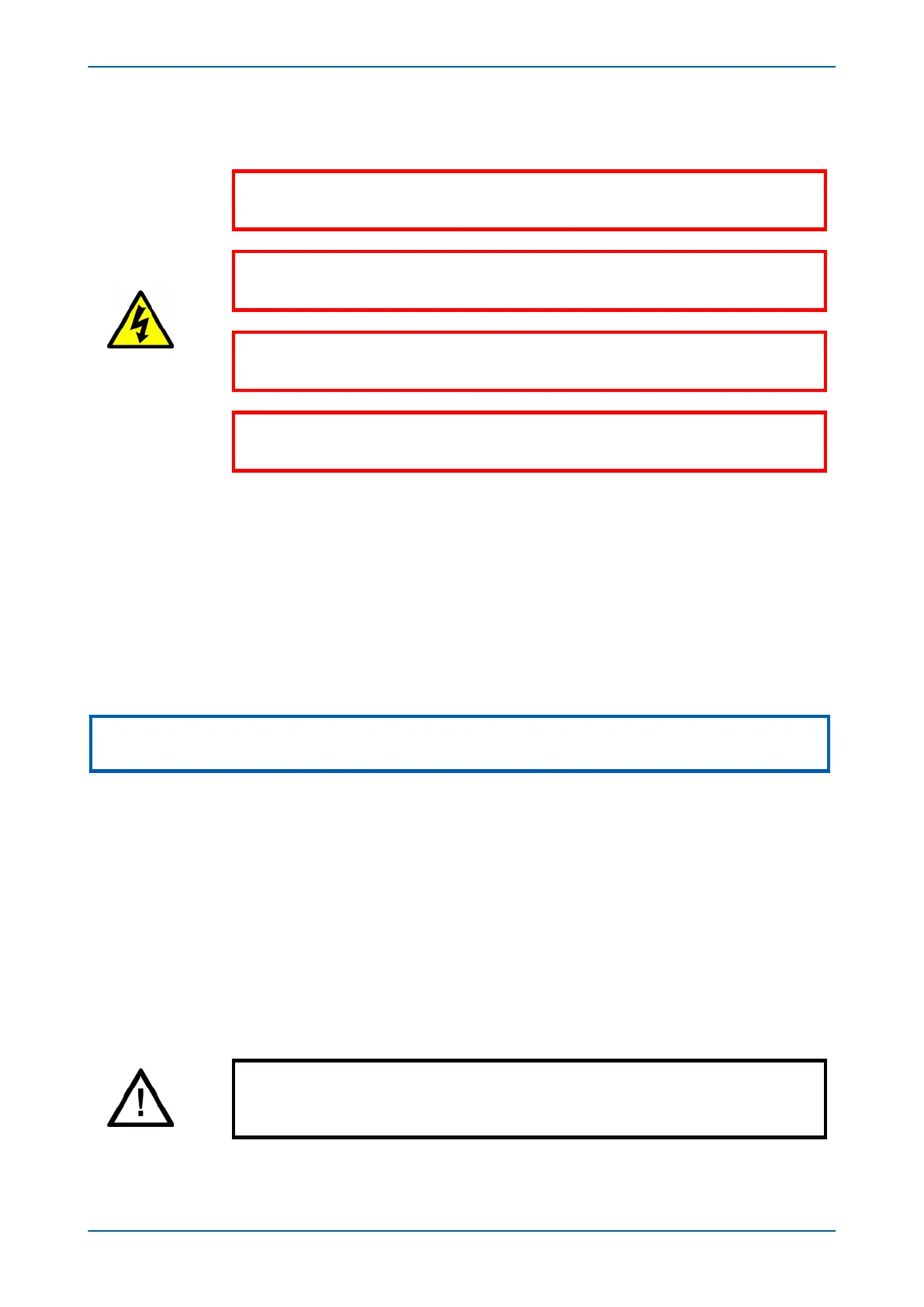5.1.1 VISUAL INSPECTION
Warning:
Check the rating information under the t
op access cover on the front of the IED.
Warning:
Check that the IED being t
ested is correct for the line or circuit.
Warning:
Record the circuit reference and system details.
Warning:
Check the CT secondar
y current rating and record the CT tap which is in use.
Carefully examine the IED to see that no physical damage has occurred since installation.
Ensur
e that the case earthing connections (bottom left-hand corner at the rear of the IED case) are used to
connect the IED to a local earth bar using an adequate conductor.
5.1.2 CURRENT TRANSFORMER SHORTING CONTACTS
Check the current transformer shorting contacts to ensure that they close when the heavy-duty terminal block is
disconnected fr
om the current input board.
The heavy-duty terminal blocks are fastened to the rear panel using four crosshead screws. These are located two
at the top and two at the bottom.
Note:
Use a magnetic bladed screwdriver to minimise the risk of the screws being left in the terminal block or lost.
Pull the terminal block away from the rear of the case and check with a continuity tester that all the shorting
switches being used ar
e closed.
5.1.3 INSULATION
Insulation resistance tests are only necessary during commissioning if explicitly requested.
Isolate all wiring fr
om the earth and test the insulation with an electronic or brushless insulation tester at a DC
voltage not exceeding 500 V. Terminals of the same circuits should be temporarily connected together.
The insulation resistance should be greater than 100 MW at 500 V.
On completion of the insulation resistance tests, ensure all external wiring is correctly reconnected to the IED.
5.1.4 EXTERNAL WIRING
Caution:
Check that the ext
ernal wiring is correct according to the relevant IED and scheme
diagrams. Ensure that phasing/phase rotation appears to be as expected.
P64x Chapter 19 - Commissioning Instructions
P64x-TM-EN-1.3 417
